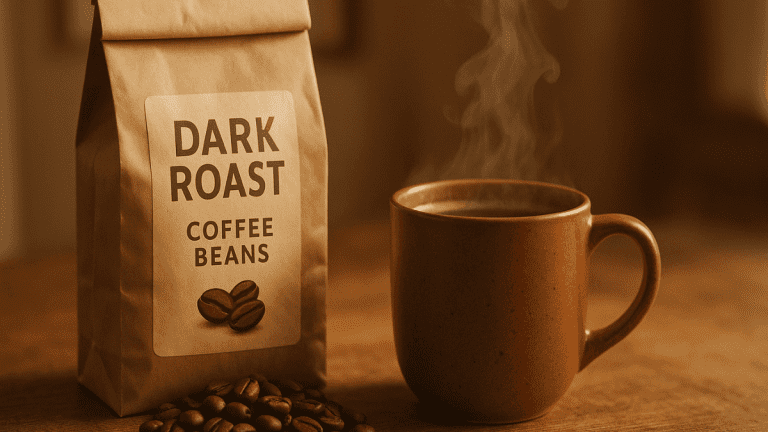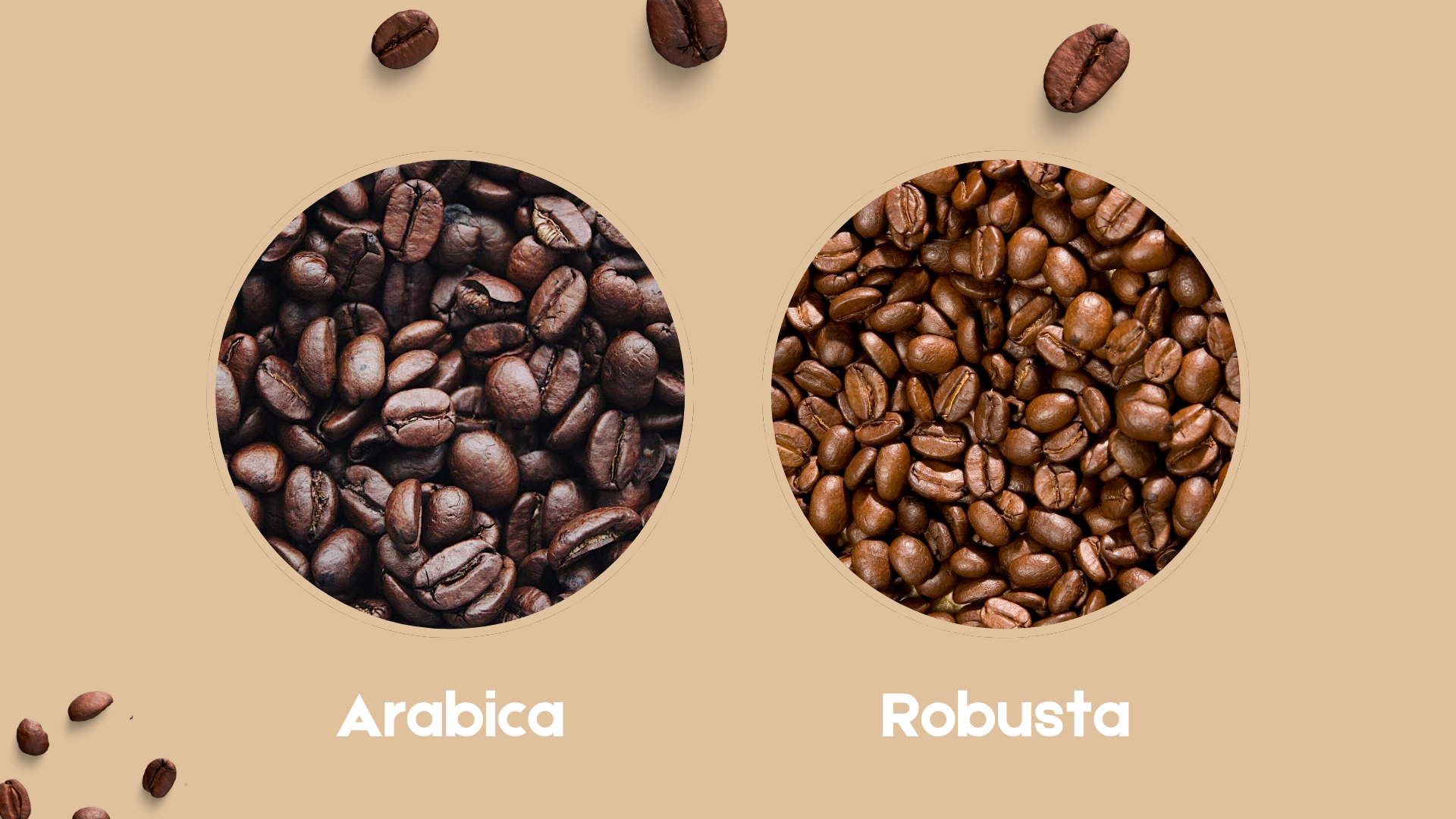
Coffee is loved all over the world. But not all coffee beans are the same. Some coffee tastes sweet and smooth. Others taste strong and bitter. Why? It’s all about the bean type. Two main types rule coffee: Arabica and Robusta. Let’s look at how they differ. This will help you pick better beans.
Where Coffee Grows
Arabica and Robusta grow in different places. This changes how they taste.
Arabica Coffee:
Arabica plants get sick easily. Bugs hurt them. Bad weather hurts them too. They need lots of care. This costs more money.
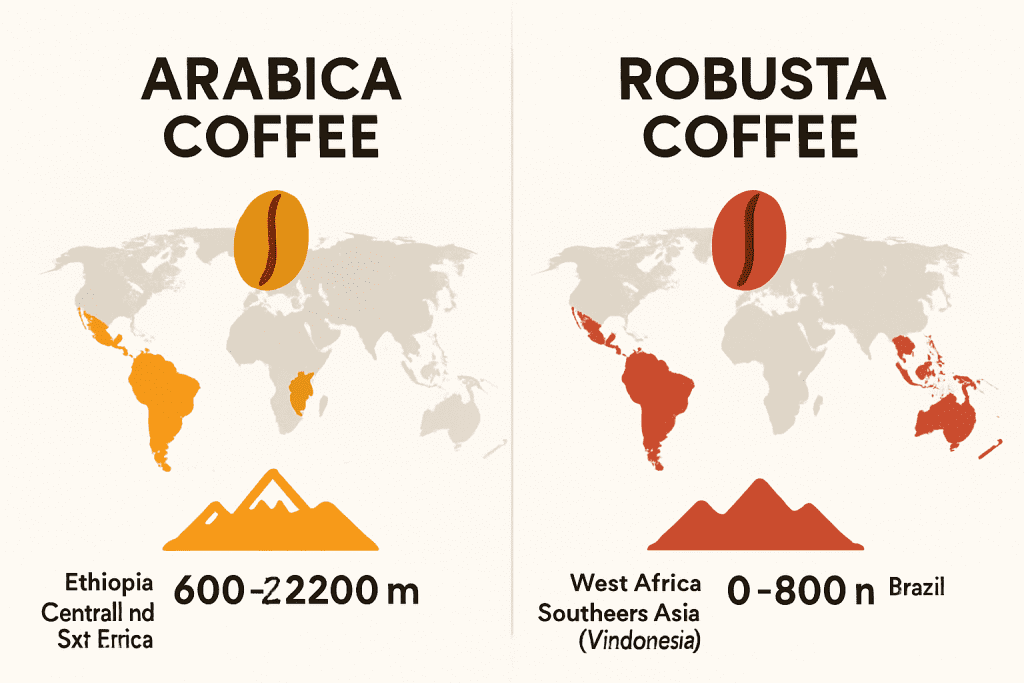
Coffee growing regions
Robusta Coffee:
Robusta is tough. It grows in more places. It comes from Africa. Robusta grows low (0 to 800 meters up). It likes hot weather. It fights bugs and disease well. This makes it cheap to grow. Robusta has more caffeine. This keeps bugs away.
How They Taste
Arabica and Robusta taste very different.
Arabica Taste
Arabica tastes smooth and mild. It has complex flavors. Growing high up makes it sweet. It has bright tang too. Arabica often tastes fruity. It can taste like flowers or nuts. Some taste like berries. Others taste like chocolate. This depends on where it grows.
- Notes: Sweet, fruity, nutty.
- Feel: Bright and tangy.
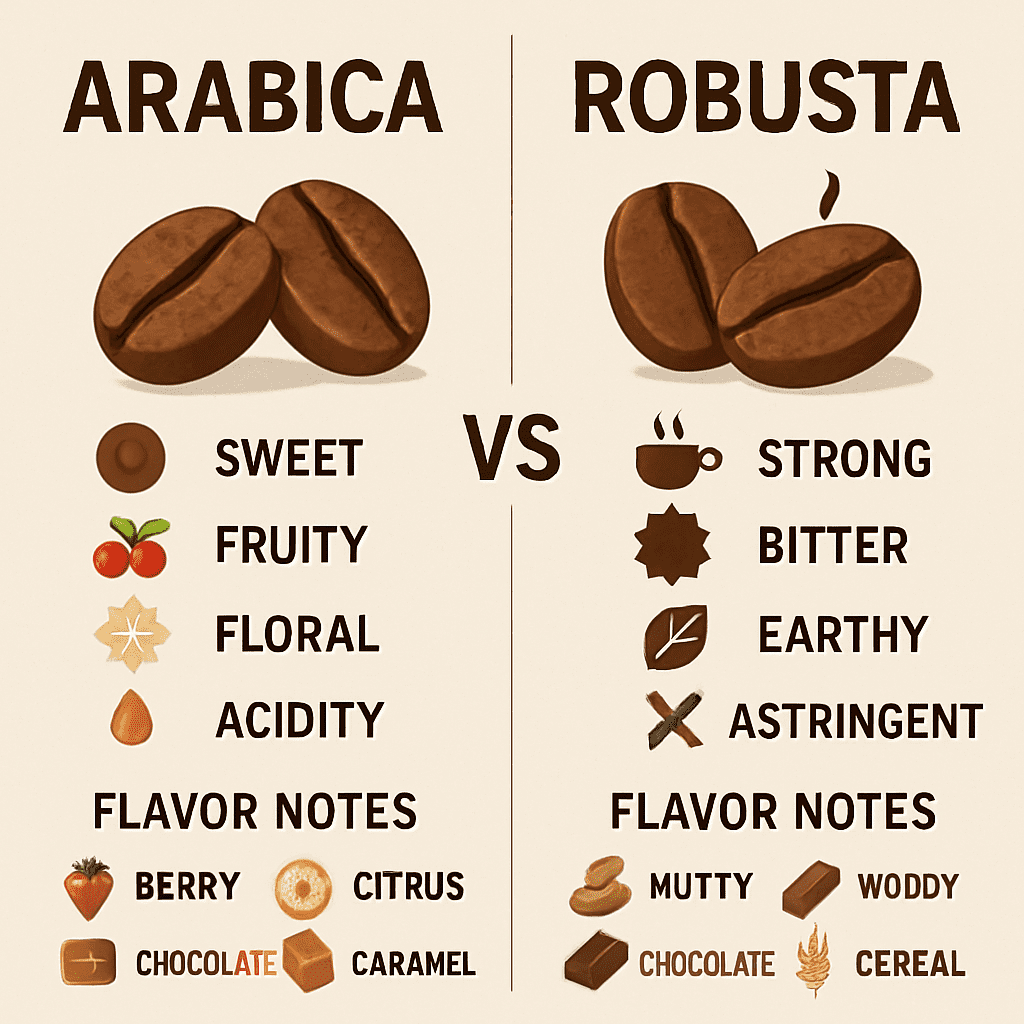
Coffee bean Taste profile infographic
Robusta Taste
Robusta tastes strong and bold. It can taste harsh. It’s more earthy than Arabica. It tastes more bitter too. Robusta tastes “woody” or “nutty.” It’s not very sweet. The high caffeine makes it bitter. It feels heavy when you drink it. That’s why it goes in espresso blends.
- Notes: Earthy, woody, nutty.
- Feel: Less tangy but more bitter.
Caffeine Amount
Arabica Beans
Arabica has less caffeine. About 1.2% to 1.5%. This makes it taste smooth. It’s not as bitter. It’s also less intense. People who like mild coffee pick Arabica.
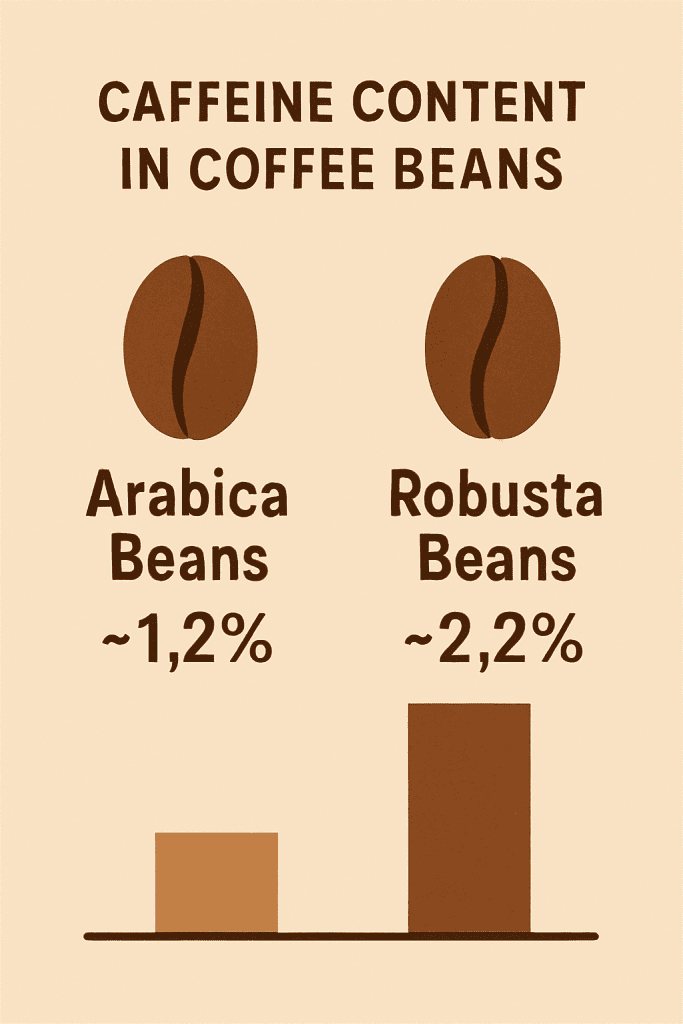
Caffeine content infographic
Robusta Beans
Robusta has twice the caffeine. About 2.2% to 2.7%. This makes it taste strong and bitter. It also makes the plant tough. People who want strong coffee pick Robusta.
How Beans Look
You can tell Arabica and Robusta apart by looking at them.
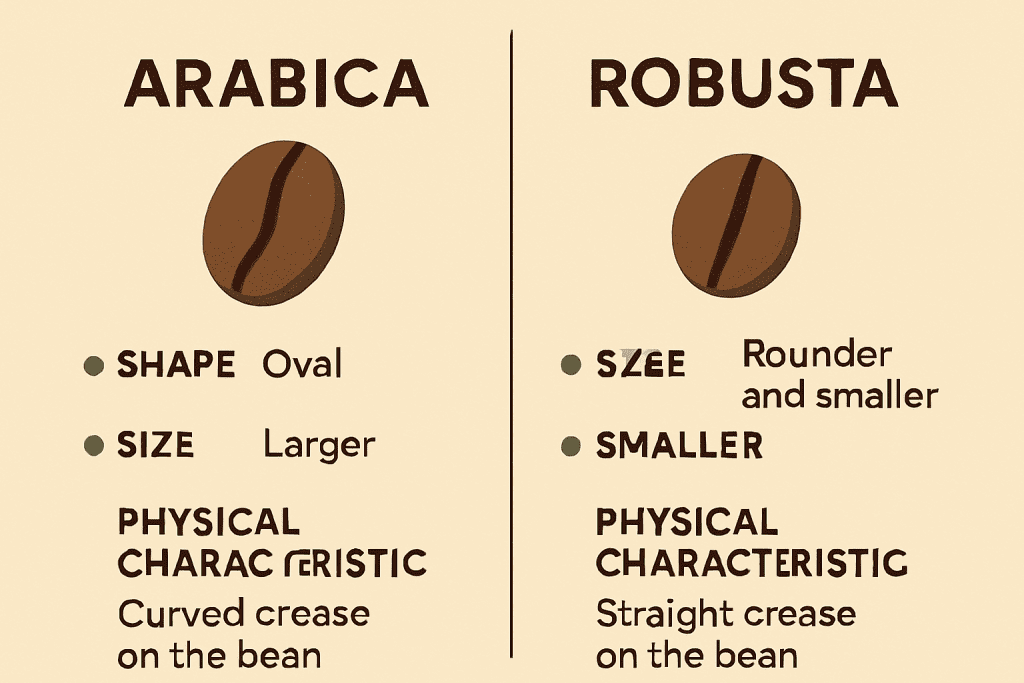
Bean appearance infographic
Arabica Beans
Arabica beans are oval. They have a curved line in the middle. They are bigger than Robusta beans. They are also longer. They feel light and airy.
Robusta Beans
Robusta beans are small and round. They have a straight line in the middle. They are thick and dense. This makes them taste strong. Their tough look shows they are hardy.
Cost
Arabica and Robusta cost different amounts.
Arabica Cost
Arabica costs more to grow. It needs extra care. It gets hurt by weather easily. Arabica makes up 60% to 70% of world coffee. But it costs more. The plants are delicate. Workers need to be careful. This makes the price higher.
Robusta Cost
Robusta is tough. It’s easy to grow. It costs less. It goes in cheap coffee blends. It goes in instant coffee too. Robusta makes up 30% to 40% of world coffee. Vietnam grows the most Robusta.
How to Use Each Type
Arabica and Robusta work for different drinks.
Arabica Uses
Arabica goes in fancy coffee. Its delicate taste shines here. It works great for drip coffee. It’s good for pour-overs. It’s good for cold brew too. The sweet taste shows more this way. People who drink black coffee like Arabica. Its taste is subtle.
Robusta Uses
Robusta goes in espresso blends. Its bold taste works well. It makes thick foam on top of espresso. Its strong taste doesn’t get lost in milk drinks. Coffee shops use it in lattes. They use it in cappuccinos. It’s the main bean in instant coffee.
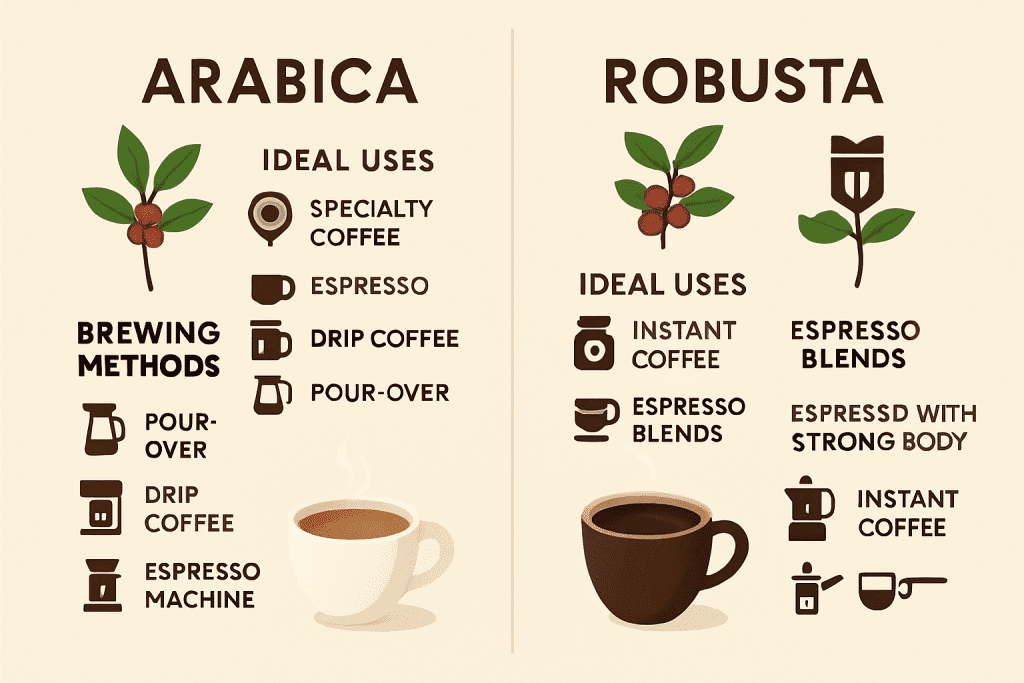
Recommended brewing methods for each bean type
Where They Grow
Different places grow different beans. This affects the taste.
Arabica Places
- Brazil: Makes the most Arabica. Tastes like chocolate and nuts.
- Colombia: Makes mild, balanced coffee. Has fruity notes.
- Ethiopia: Where Arabica was born. Makes bright, fruity coffee.
Robusta Places
- Vietnam: Ships the most Robusta. Makes intense, bold coffee.
- Uganda: Makes rich, earthy Robusta.
- Indonesia: Makes full, earthy Robusta.
Health Benefits
Both beans help your health. But caffeine affects your body differently.
Arabica Health
Arabica has lots of antioxidants. These protect your cells. The mild caffeine boosts your mind. It won’t make you jittery.
Robusta Health
Robusta’s high caffeine gives you more energy. It helps your mind focus better. But it might upset sensitive stomachs. The bitter taste and high caffeine can be too much for some people.
Impact on Earth and Money
Coffee affects nature and local money.
Arabica Challenges
Climate change hurts Arabica crops. Rising heat and changing rain patterns are bad. People worry Arabica production might drop. Farmers are trying new ways to grow it. They get Fair Trade and eco-friendly labels. This helps save Arabica’s future.
Robusta Benefits
Robusta handles warming weather better. As Earth gets hotter, more farmers grow Robusta. It’s a safer crop. This makes Robusta cheaper for everyone.
Which Should You Pick?
Pick based on what you like, how you brew, and your budget.
- Pick Arabica if you like smooth, sweet, fruity taste.
- Pick Robusta if you like bold, intense, bitter taste.
- For espresso, mix both types for balance.
Final Thoughts
Arabica and Robusta each taste unique. They offer different benefits. They work for different coffee lovers. Whether you like smooth Arabica or bold Robusta, knowing the differences helps you enjoy coffee more. Next time you make coffee, think about where your beans came from.

